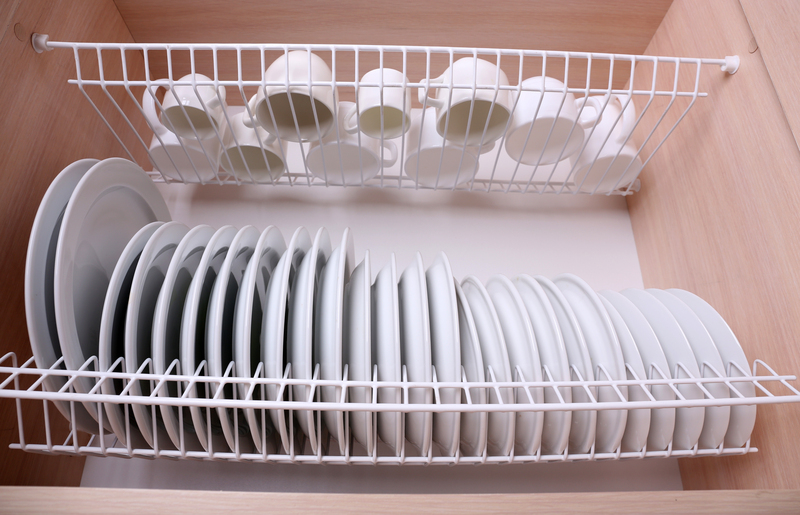The Essentiality of Air Quality in Modern Living
Posted on 26/08/2025
The Essentiality of Air Quality in Modern Living
In the hustle and bustle of our modern world, we often overlook the significance of air quality in our daily lives. While advancements in technology, urban development, and lifestyle have transformed society, they have also introduced unprecedented challenges to our environment--chief among them, the quality of the air we breathe. Air quality has become an essential parameter for healthy living, productivity, and overall well-being in the 21st century.
Understanding Air Quality: The Basics
Air quality refers to the condition or purity of the air around us, typically measured with regard to the amount of pollutants it contains. These pollutants include particulate matter (PM2.5 and PM10), nitrogen oxides (NOx), sulphur dioxide (SO2), carbon monoxide (CO), and volatile organic compounds (VOCs). In the age of modern living, air quality has emerged as a critical benchmark for public health and environmental sustainability.
Key Pollutants Impacting Air Quality
- Particulate Matter (PM) - Tiny airborne particles that can penetrate deep into lungs and even enter the bloodstream.
- Nitrogen Dioxide (NO2) - A gas primarily produced from vehicle emissions and industrial activity.
- Sulphur Dioxide (SO2) - Released from burning fossil fuels and certain industrial processes.
- Ground-level Ozone (O3) - Created when sunlight reacts with pollutants from vehicles and industry.
- Volatile Organic Compounds (VOCs) - Emitted as gases from certain solids or liquids, such as paints and cleaning supplies.

Why Is Air Quality So Important in Today's Society?
The importance of air quality in modern life cannot be overstated. As urbanization and industrialization increase, so too does our exposure to harmful air pollutants. The quality of the air directly impacts our health, our environment, and even our economies.
Human Health and Well-Being
It is well established that poor air quality is a leading contributor to serious diseases. According to the World Health Organization, an estimated 7 million people die prematurely every year due to exposure to polluted air. The health impacts of breathing contaminated air are far-reaching, including:
- Respiratory disorders such as asthma and chronic obstructive pulmonary disease (COPD)
- Cardiovascular diseases including heart attacks and strokes
- Adverse effects on children's lung development
- Increased risk of certain cancers, especially lung cancer
- Aggravation of allergies and other immune system disorders
Individuals with pre-existing health conditions, pregnant women, and the elderly are especially vulnerable to air pollution. However, even healthy individuals can experience negative effects from subpar air conditions, especially over the long term.
Environmental Impact of Air Quality
The environmental consequences of diminished air quality are equally concerning. Air pollution can:
- Contribute to the formation of acid rain, which damages crops, forests, and aquatic habitats
- Cause ozone layer depletion, leading to increased UV radiation at the Earth's surface
- Reduce visibility, resulting in hazardous driving and aviation conditions
- Impact global climate change by altering atmospheric composition
The Role of Technology and Modern Living in Air Quality
Modern living has its perks--advanced transport systems, technological conveniences, and industrial efficiencies. However, these same innovations can be double-edged swords when it comes to maintaining good air quality:
- Urbanization has concentrated populations, increasing vehicle density and industrial activity, which emit a substantial amount of pollutants.
- The widespread use of heating, ventilation, and air conditioning units (HVAC systems) can sometimes recirculate polluted indoor air if not properly maintained.
- Modern interiors often use synthetic materials, paints, and cleaning products that emit VOCs, contributing to indoor air pollution.
Indoor vs. Outdoor Air Quality
A remarkable aspect of air quality in the 21st century is the distinction between indoor and outdoor air pollution. Most people spend up to 90% of their time indoors, making indoor air quality a top priority for modern living. Poor ventilation in homes, offices, and schools can lead to the buildup of indoor pollutants, sometimes exceeding outdoor pollution levels.
- Common indoor air contaminants: Dust, pet dander, mold spores, tobacco smoke, cooking emissions, chemical fumes from cleaning products, and emissions from furnishings and building materials.
Special attention must be paid to indoor air quality essentials when designing homes or workplaces to ensure a healthy and productive environment.
Assessing and Monitoring Air Quality in Urban Spaces
Cities worldwide have implemented advanced systems for monitoring air quality. Real-time data from air quality sensors enables governments to issue timely health advisories, develop policies, and raise public awareness.
What is the Air Quality Index (AQI)?
The Air Quality Index (AQI) is a standardized tool to communicate the level of air pollution to the public. It measures several major pollutants and translates complex environmental data into a simple scale--usually ranging from 0 (good) to 500 (hazardous). Anyone interested in local air quality can easily access AQI updates via mobile apps, official websites, or smart home devices.
- Good (0-50): Air quality is satisfactory and poses little or no risk.
- Moderate (51-100): Acceptable for the general population but may pose a risk to sensitive individuals.
- Unhealthy (101-150): Sensitive groups may experience health effects.
- Very Unhealthy & Hazardous (151-500): Emergency conditions; everyone may experience health effects.
Strategies for Improving Air Quality in Modern Living
Given the growing concerns about air pollution, adopting strategies to improve air quality is more crucial than ever. Both individual and collective efforts can drastically enhance the atmospheric conditions we live in.
Individual Actions for Cleaner Air
- Opt for sustainable transportation: Use public transport, bikes, electric vehicles, or carpool whenever possible.
- Limit indoor pollution sources: Avoid smoking indoors, use VOC-free cleaning products, and ensure good home ventilation.
- Use air purifiers: High-efficiency particulate air (HEPA) filters can significantly improve indoor air quality.
- Regular home maintenance: Clean HVAC systems and replace air filters periodically to avoid recirculating pollutants.
- Grow indoor plants: Certain plants help absorb toxins and improve the purity of indoor air.
- Support green spaces: Trees and public parks not only enhance beauty but also act as natural air filters.
Policy and Community Initiatives
- Urban planning: Developing green belts, improving public transport, and encouraging non-motorized mobility.
- Emission control: Enforcing stricter emission standards for vehicles and industries.
- Renewable energy: Shifting to solar, wind, and other renewables to reduce reliance on fossil fuels.
- Educational campaigns: Raising awareness about the impact of air pollution and promoting best practices.
The Economic and Societal Benefits of Cleaner Air
Improving air quality is not merely a health or environmental issue; it has direct economic and societal benefits.
- Reduced healthcare costs: Lower incidence of pollution-related diseases means fewer hospital visits and reduced strain on public health systems.
- Enhanced productivity: Healthier workforces are more productive, resulting in economic growth and improved quality of life.
- Increased property values: Clean and green neighborhoods are more desirable, boosting real estate markets.
- Better quality of life: Clean air enhances outdoor recreation, tourism, and overall happiness.
Emerging Technologies Shaping the Future of Air Quality
As technology evolves, new solutions are emerging to address the air pollution crisis:
- Smart air quality sensors for real-time monitoring in homes and public spaces
- AI-powered air filtration systems that self-adjust based on pollutant levels
- Green architecture: Buildings designed to maximize airflow and utilize non-toxic materials
- Urban forests: Integrating more trees and plants into city landscapes
- IoT-enabled HVAC systems: Providing precise air management in commercial and residential buildings

Conclusion: Prioritizing Air Quality in Modern Living
The vital importance of air quality in 21st-century life is clear. Clean air is foundational to public health, environmental sustainability, and economic advancement. In the face of growing urbanization and industrialization, society must rethink its relationship with the environment. Whether through innovative technology, effective policy, or conscious lifestyle choices, every step toward improving air quality is a stride toward a healthier and more vibrant future.
Let us recognize the essentiality of air quality in modern living--because the air we breathe shapes the quality of our lives.
Frequently Asked Questions about Air Quality in Modern Living
-
What are the most common indoor air pollutants?
Pet dander, mold, tobacco smoke, dust mites, chemical fumes from cleaning products, and emissions from furniture and building materials. -
How can I check the air quality in my area?
Many cities report their AQI through public websites, smartphone apps, and even smart home devices like air quality monitors. -
Can indoor plants purify the air?
Yes, certain plants like snake plant, spider plant, and peace lily can help remove toxins and improve indoor air quality. -
Which groups are most at risk from poor air quality?
Children, the elderly, pregnant women, and those with pre-existing respiratory or heart conditions. -
What are the long-term effects of poor air quality?
Chronic respiratory diseases, heart problems, impaired lung development, and increased cancer risk.
Remember: Every breath counts. Make clean air your priority and contribute to a healthier future for yourself and for generations to come.




